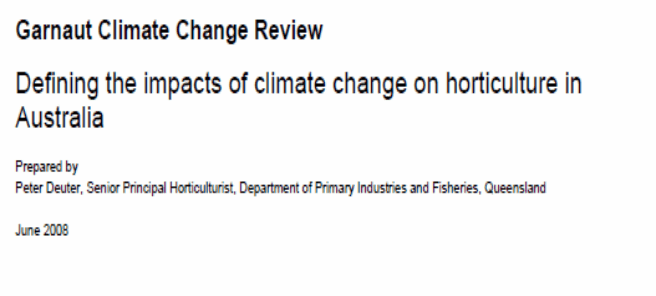This review provides a clear indication of impacts of climate change on Australian horticulture where data is available, and relies on extrapolations of this to other horticultural commodities and production regions. Climate change will impact horticultural commodities and regions through all of the following:
- changes in the suitability and adaptability of current cultivars as temperatures change, together with changes in the optimum growing periods and locations for horticultural crops
- changes in the distribution of existing pests, diseases and weeds, and an increased threat of new incursions
- increased incidence of physiological disorders such as tip burn and blossom end rot
- greater potential for downgrading product quality e.g. because of increased incidence of sunburn
- increases in pollination failures if heat stress days occur during flowering
- increased risk of spread and proliferation of soil borne diseases as a result of more intense rainfall events (coupled with warmer temperatures)
- increased irrigation demand especially during dry periods
- changing reliability of irrigation schemes, through impacts on recharge of surface and groundwater storages
- increased atmospheric CO2 concentrations will benefit productivity of most horticultural crops, although the extent of this benefit is unknown
- increased risk of soil erosion and off-farm effects of nutrients and pesticides, from extreme rainfall events
- increased input costs—especially fuel, fertilisers and pesticides
- additional input cost impacts when agriculture is included in an Emissions Trading Scheme (ETS).
The impacts described in this paper refer mainly to the vegetable and fruit industries (excluding the wine industry), with some references being made to ‘lifestyle horticulture’ (turf, floriculture and ornamental’s).
